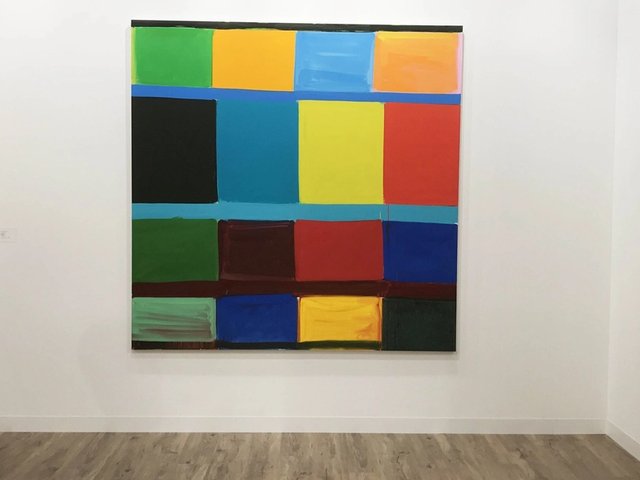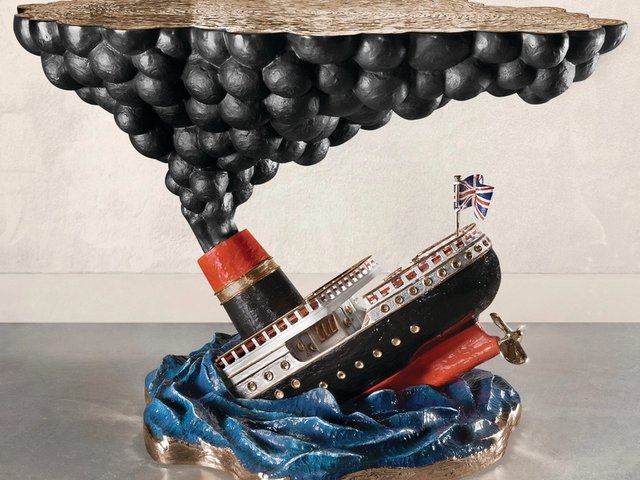It is not just collectors and curators who are doing a “grand tour” of Europe’s contemporary art hotspots to visit the mega-exhibitions now on: the Venice Biennale, Documenta 14 in Athens and Kassel, Skulptur Projekte Münster and the Danish newcomer ARoS Triennial. Leading artists are on the road as well, so there has been a much bigger than usual turnout of them at Art Basel this week.
Among those who have been spotted in Basel are Mickalene Thomas, Elmgreen & Dragset, Phyllida Barlow, Wolfgang Tillmans, Tino Sehgal, Subodh Gupta, A.A. Bronson, David Claerbout, Song Dong, Wu Tsang, Sue Williamson, Basim Magdy, Pedro Cabrita Reis, Park Chan-kyong, Michael DePalma and Max Lamb.
But it was not always the case that artists would gladly attend such a commercial event. Chuck Close famously compared going to an art fair to taking a cow on a guided tour of a slaughterhouse. So what brings them here this year?
Some are here to install their work in the fair, especially those showing large-scale projects. Around 40 of the 70 artists exhibiting in Unlimited are in town, says the section’s curator, Gianni Jetzer, and many others have stopped off at the fair to see their gallerists. Julio Le Parc, the 88-year-old Argentina-born, Paris-based pioneer of kinetic art, visited his mural in Unlimited on Monday. Another distinguished artist, Polish-born, New York-based Krzysztof Wodiczko, was nearby to see Poliscar Variant 2 (1991/2017) installed.
The Belgian artist David Claerbout, whose digital film installation imagining the real-time decay of the Olympic stadium in Berlin is being shown at the Schaulager, also has a standout work in Unlimited: a reworking of Disney’s Jungle Book, The pure necessity (2016), with the cast of animals behaving as real animals. Art Basel is where he met “the people who were important in life”, the artist says, including his first Belgian dealer and the international representation that came soon after, including Hauser and Wirth, Sean Kelly and Esther Schipper. “Networking is not my thing. But in Basel, the galleries provide a safety net. I wouldn’t come if I didn’t have them; I wouldn’t come to self-promote,” he says.
Claerbout concedes that an art fair is not the ideal place to show work. “It’s crowded and brutal and noisy; it’s basically the last place you want to show your art,” he says. “But experience has told me that really good things come out of it; it works in a strange way. And it does result in sales.”
Art Basel’s events programming always features leading artists. Yesterday, Annette Messager was first on stage, in conversation with Maria Balshaw, the new director of the Tate in London. Other artists due to talk at the fair this week include Julian Charrière, Candice Breitz and Carlos Garaicoa.
Other international artists have major exhibitions in Europe opening around the same time and are making the most of their moment in the spotlight. Jose Pedro Croft, who is representing Portugal at the Venice Biennale with a monumental coloured and mirrored glass sculpture in the Campo di Marte, visited the fair, where his dealer Helga de Alvear is showing a sculpture and large-scale works on paper. The South African artist Sue Williamson, who has a moving work on the slave trade in Unlimited, Messages from the Atlantic Passages (2017), was already in Europe for the opening of the group show Art/Afrique, le nouvel atelier at the Fondation Luis Vuitton in Paris (until 28 August). "For most artists, the three intense art experiences are an irresistible triple whammy," she says.




